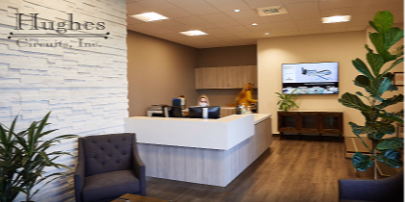AD255A Laminate from Arlon
Arlon’s AD255A is a woven fiberglass reinforced PTFE composite material designed as a low cost laminate with excellent low loss characteristics. Features of AD255A include lower loss through the use of optimizing the trade-off between thicker and thinner glass styles, strategic use of lower loss ceramics at the exclusion of lossier glass, as well as a tighter DK tolerance. The AD255A design offers a higher degree of performance over comparable legacy PTFE/glass laminates that have not contained ceramic. This results in lower loss, higher antenna efficiencies, lower thermal expansion properties and greater phase stability.
This material combines the excellent low loss electrical properties of PTFE resin with the thermal properties of ceramic and the enhanced value of cost effective fiberglass styles to provide low cost laminate materials suitable for high volume commercial wireless communication applications.
The electrical properties of AD255A are highly desired in applications where higher frequency and expectations for increased fidelity with broadband signals are beyond the performance capabilities offered by high temperature or low temperature ceramics and thermosets.
Stability of PTFE over a wide frequency range and its low loss properties, makes AD255A ideal for a variety of microwave and R/F applications in telecom infrastructure. The inclusion of micro-dispersed ceramic provides thermal stability to the laminate in the form of lower CTE values and greater Phase Stability across temperature. The X and Y CTE matches the CTE of copper.
AD255A is compatible with the processing used for standard PTFE based printed circuit board substrates. Its low Z-axis thermal expansion improves plated through hole reliability compared to typical PTFE based laminates. Low X-Y expansion improves BGA solder-joint reliability.
Features of AD255A
- Very Low Loss PTFE and Ceramic Filled Composite (0.0014 Loss Tangent at Base Station Frequencies)
- Dielectric Constant (2.55) with Tighter Tolerance
- Low Dielectric Loss (Loss Tangent)
- Low Profile Copper (lower conductive losses and lowest PM)
- Low Z-Direction CTE
Benefits of AD255A
- Higher Antenna Efficiencies
- Lower Insertion Loss
- Low PIM for Antenna Applications
- Excellent CTI for Phase Stability
- Ceramic provides higher degree of Dielectric Constant Stability as Temperatures Change or Cycle
Typical Applications of AD255A
- Base Station Antenna Applications
- Commercial Antennas
- Digital Audio Broadcasting (DAB) Antennas (Satellite Radio)









